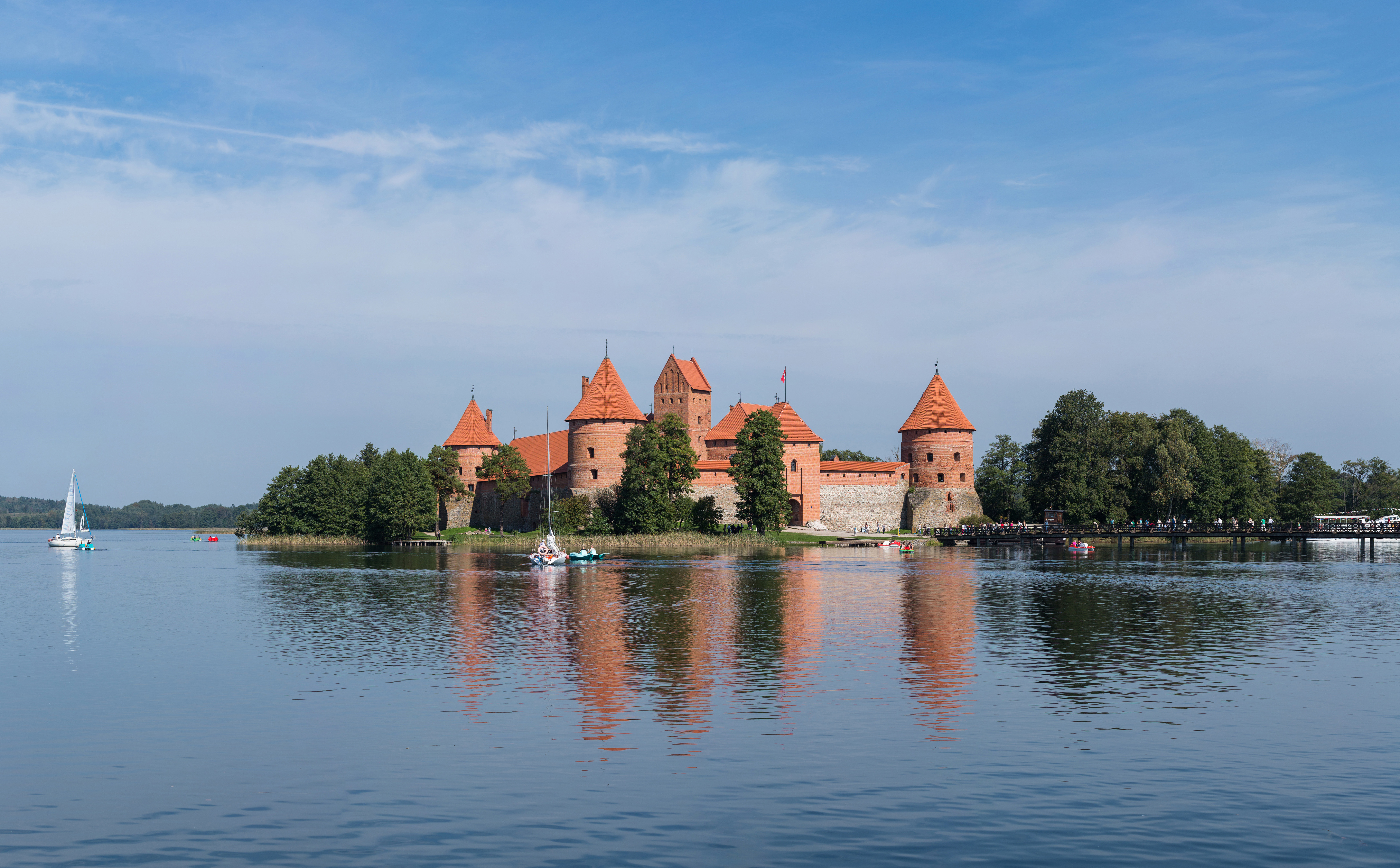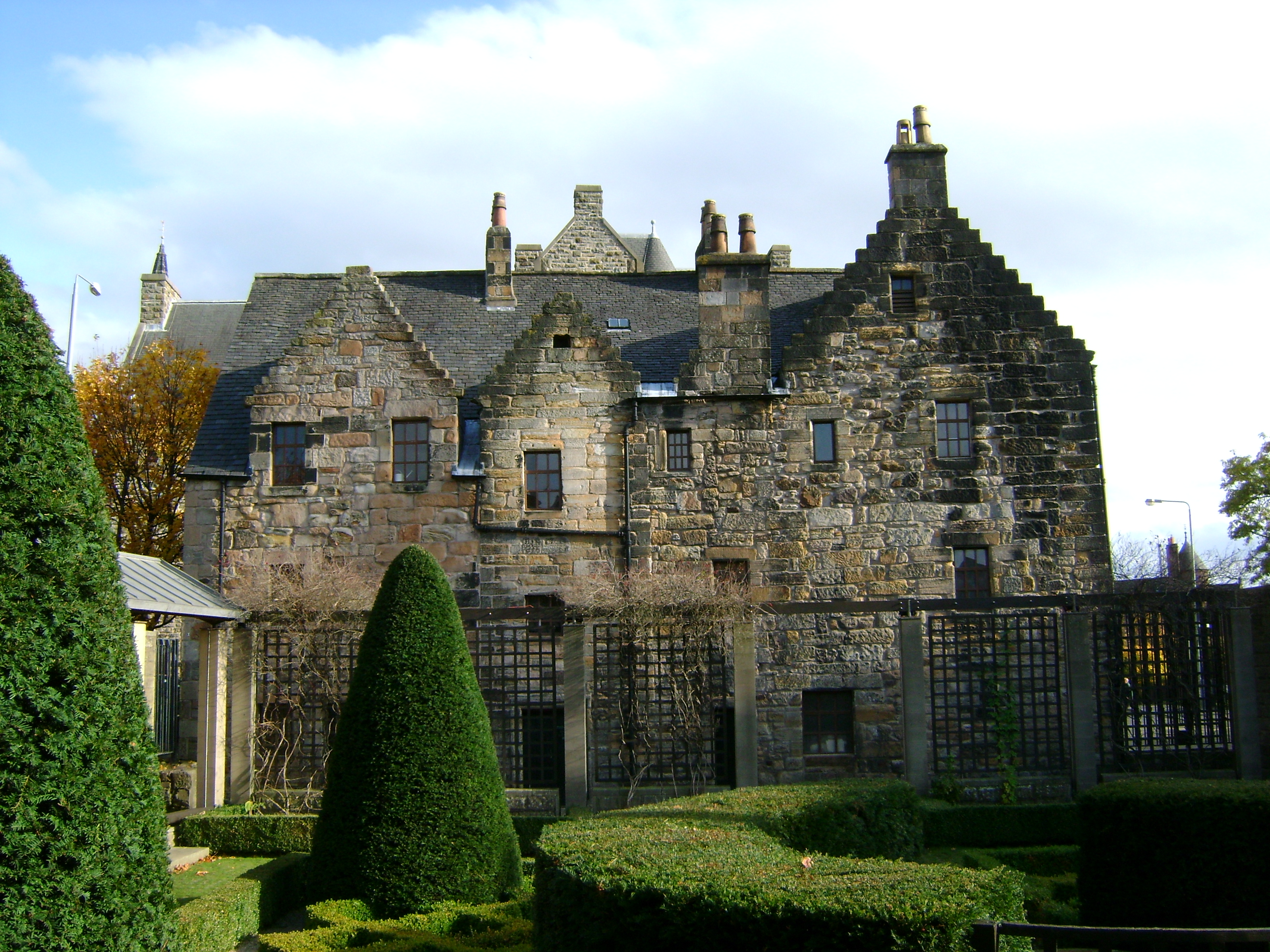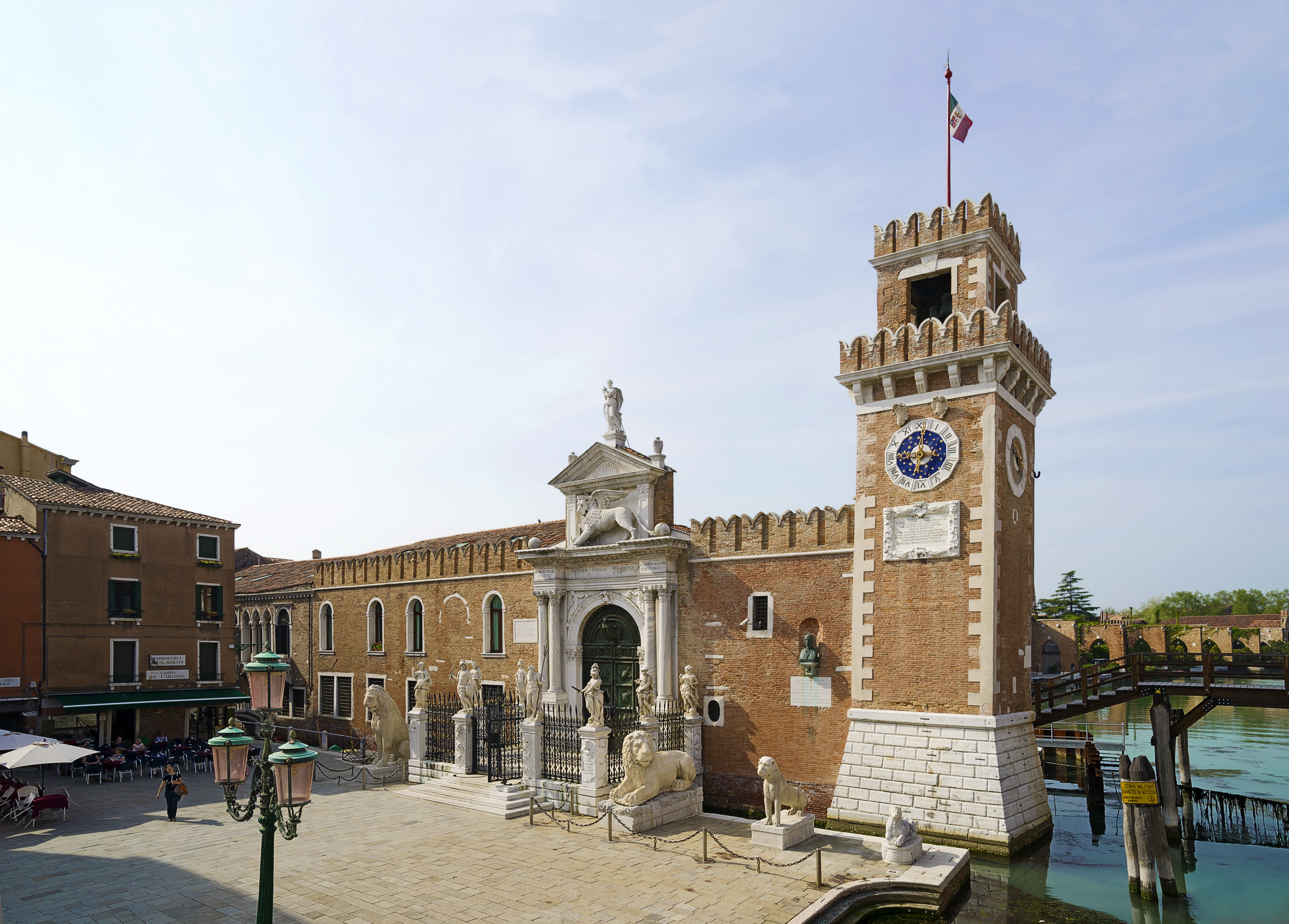|
1401 In Architecture
__TOC__ Buildings and structures Buildings * 1402 – Seville Cathedral is begun. * 1402 – Charles Bridge in Prague, Czech Republic is completed. * 1403 ** The Gur-e-Amir Mausoleum in Samarkand is begun on the orders of Timur. ** The City God Temple of Shanghai is built. * 1405 ** The Changdeokgung of Korea is completed. ** Construction of new Mausoleum of Khoja Ahmed Yasawi in Turkistan (Timurid Empire) ceases. * 1407 – Swalcliffe Tithe Barn in Oxfordshire, England, is completed. * 1409 ** The Upper Castle in Vilnius in Lithuania is completed. ** The Trakai Island Castle at Trakai in Lithuania is completed. Births * c. 1400 – Filarete, born Antonio di Pietro Averlino, Florentine architect (died c. 1469) * 1404: February 14 – Leon Battista Alberti, Italian architect and polymath (died 1472) Deaths * 1400: August 21 – Henry Yevele, English master mason (born c. 1320) References * Architecture Architecture is the art and technique of designing and building, ... [...More Info...] [...Related Items...] OR: [Wikipedia] [Google] [Baidu] |
1390s In Architecture
Buildings and structures Buildings * c. 1300 ** Nidaros Cathedral is completed in Trondheim, Norway. ** Spire of St Wulfram's Church, Grantham, England, is completed. * c. 1300–1310 – Great Coxwell Barn in the Vale of White Horse in England is built. * 1302–1312 – Dome of Soltaniyeh in Ilkhanate Persia is built. * 1304 ** Ypres Cloth Hall is completed. ** St John the Evangelist's Church, Newton Arlosh, England, is completed. * 1306 – Wells Cathedral chapter house in England is completed in Decorated Gothic style. * 1308 ** The Priest's House, Muchelney, England, is built. ** The Yuchang Lou Yuchang Lou in Yuan dynasty China is built. * 1309 – Construction begins on the Doge's Palace, Venice, Doge's Palace in Venice (completed in 1420s in architecture, 1424). * c. 1310–1320 – Funerary chapel, Chora Church of the Monastery of Christ, Constantinople, is built. * 1311 – Alai Darwaza gateway in Qutb complex, Delhi Sultanate, is completed. * 1314 ** Completion of Old St ... [...More Info...] [...Related Items...] OR: [Wikipedia] [Google] [Baidu] |
Swalcliffe
Swalcliffe is a village and civil parish about west of Banbury in Oxfordshire. The parish is about long north–south and about east–west. The 2011 Census recorded the population of the modern Swalcliffe parish as 210. The toponym "Swalcliffe" comes from the Old English ''swealwe'' and ''clif'', meaning a slope or cliff frequented by swallows. The ancient parish of Swalcliffe was larger than the present civil parish, and included the townships of Epwell, Shutford, Sibford Ferris and Sibford Gower. Archaeology About northeast of the village are the remains of an Iron Age hill fort on Madmarston Hill and the site of a Roman villa at Swalcliffe Lea. The hill fort is a Scheduled Ancient Monument. The site of the villa is close to the course of a former Roman road running approximately east–west. Its course is now a bridleway. One authority asserts that there was a Roman or Romano-British village here. Manor Swalcliffe Manor house has a 13th-century service wing and a 1 ... [...More Info...] [...Related Items...] OR: [Wikipedia] [Google] [Baidu] |
1320s In Architecture
Buildings and structures Buildings * c. 1300 ** Nidaros Cathedral is completed in Trondheim, Norway. ** Spire of St Wulfram's Church, Grantham, England, is completed. * c. 1300–1310 – Great Coxwell Barn in the Vale of White Horse in England is built. * 1302–1312 – Dome of Soltaniyeh in Ilkhanate Persia is built. * 1304 ** Ypres Cloth Hall is completed. ** St John the Evangelist's Church, Newton Arlosh, England, is completed. * 1306 – Wells Cathedral chapter house in England is completed in Decorated Gothic style. * 1308 ** The Priest's House, Muchelney, England, is built. ** The Yuchang Lou Yuchang Lou in Yuan dynasty China is built. * 1309 – Construction begins on the Doge's Palace in Venice (completed in 1424). * c. 1310–1320 – Funerary chapel, Chora Church of the Monastery of Christ, Constantinople, is built. * 1311 – Alai Darwaza gateway in Qutb complex, Delhi Sultanate, is completed. * 1314 ** Completion of Old St Paul's Cathedral in London. ** Construction ... [...More Info...] [...Related Items...] OR: [Wikipedia] [Google] [Baidu] |
Henry Yevele
Henry Yevele (''c''. 1320 – 1400) was the most prolific and successful master mason active in late medieval England. The first document relating to him is dated 3 December 1353, when he purchased the Freedom of the City of London#Freedom of the City of London, freedom of London. In February 1356 he was sufficiently well known as a mason that he was chosen as one of a commission of six cutting masons who were to inform the City of London Corporation, mayor and aldermen about the acts and articles of the craft. Career His first connection with royal building works was probably when he was contracted from March 1357 to September 1359 to remodel the Black Prince's manor at Kennington, at the cost of £221 4s. 7d. On 23 June 1360, he was appointed "disposer" of the royal works at the Palace of Westminster and the Tower of London. For this he was paid 1s. per day, although he continued undertaking other, non-royal, commissions. At the Palace of Westminster, Yevele was responsible for r ... [...More Info...] [...Related Items...] OR: [Wikipedia] [Google] [Baidu] |
1472 In Architecture
__TOC__ Buildings and structures Buildings * 1470 – Church and lighthouse tower, Westkapelle, Walcheren, completed * 1471 – Provand's Lordship, Glasgow, Scotland, built. * 1472–1474 – The Ordos Wall, first substantial section of the Ming Great Wall of China, built * 1473 – Work on Cologne Cathedral west front and towers suspended until 19th century * 1474 – Nave vault of St. Stephen's Cathedral, Vienna, completed * 1475–1479 – Dormition Cathedral, Moscow, designed by Aristotele Fioravanti, built * 1479 – Munich Frauenkirche completed by Jörg von Halsbach Births * 1475: March 6 – Michelangelo, born Michelangelo di Lodovico Buonarroti Simoni in Caprese, Tuscany, Italian sculptor, painter, architect, poet and engineer (died 1564) * 1475: September 6 – Sebastiano Serlio born in Bologna, Italian Mannerist architect and theoretician working in France (died c. 1554) Deaths * 1472: April 25 – Leon Battista Alberti, Italian architect and polymath (born 140 ... [...More Info...] [...Related Items...] OR: [Wikipedia] [Google] [Baidu] |
Leon Battista Alberti
Leon Battista Alberti (; 14 February 1404 – 25 April 1472) was an Italian Renaissance humanist author, artist, architect, poet, priest, linguist, philosopher, and cryptographer; he epitomised the nature of those identified now as polymaths. He is considered the founder of Western cryptography, a claim he shares with Johannes Trithemius. Although he often is characterized exclusively as an architect, as James Beck has observed, "to single out one of Leon Battista's 'fields' over others as somehow functionally independent and self-sufficient is of no help at all to any effort to characterize Alberti's extensive explorations in the fine arts". Although Alberti is known mostly for being an artist, he was also a mathematician of many sorts and made great advances to this field during the fifteenth century. The two most important buildings he designed are the churches of San Sebastiano (1460) and Sant'Andrea (1472), both in Mantua. Alberti's life was described in Giorgio Vasari's ' ... [...More Info...] [...Related Items...] OR: [Wikipedia] [Google] [Baidu] |
1469 In Architecture
__TOC__ Buildings and structures Buildings * 1460 ** Palazzo Medici in Florence, designed by Michelozzo, is completed. ** Porto Magna in Venetian Arsenal, perhaps built by Antonio Gambello from a design by Jacopo Bellini is constructed, the first neoclassical building in Venice. * 1462 – Reconstruction of Basilica of Sant'Andrea, Mantua in Lombardy by Leon Battista Alberti begins. * c. 1463 – Dardanelles fortresses of Kilitbahir Castle and Kale-i Sultaniye are built. * 1463–67 – Fatih Mosque, Istanbul, designed by Atik Sinan, is constructed. * 1464 – Neemrana fort in India is begun. * 1466 – Ockwells Manor in Berkshire, England, is completed. * 1466–67 – Neubrügg covered wooden bridge over the Aare between Bern and Kirchlindach is erected. * 1467 – Wongaksa Pagoda, Seoul, Korea, is built. * 1468 ** Rebuilding of the Palazzo Ducale, Urbino, begun by Luciano Laurana. ** Building of Basilica della Santa Casa, Loreto, Italy, begun by Giuliano da Maiano. * 1469 ... [...More Info...] [...Related Items...] OR: [Wikipedia] [Google] [Baidu] |
Filarete
Antonio di Pietro Aver(u)lino (; – ), known as Filarete (; from grc, φιλάρετος, meaning "lover of excellence"), was a Florentine Renaissance architect, sculptor, medallist, and architectural theorist. He is perhaps best remembered for his design of the ideal city of Sforzinda, the first ideal city plan of the Renaissance. Biography Antonio di Pietro Averlino was born c. 1400 in Florence where he probably trained as a craftsman. Sources suggest that he worked in Florence under the Italian painter, architect, and biographer Lorenzo Ghiberti, who gave him his more famous name “Filarete” which means “a lover of virtue”. In the mid 15th century, Filarete was expelled from Rome after being accused of attempting to steal the head of John the Baptist and he moved to Venice and then eventually to Milan. There he became a ducal engineer and worked on a variety of architectural projects for the next fifteen years. According to his biographer, Vasari, Filarete died in Rome ... [...More Info...] [...Related Items...] OR: [Wikipedia] [Google] [Baidu] |
Trakai
Trakai (; see names section for alternative and historic names) is a historic town and lake resort in Lithuania. It lies west of Vilnius, the capital of Lithuania. Because of its proximity to Vilnius, Trakai is a popular tourist destination. Trakai is the administrative centre of Trakai district municipality. The town covers of area and, according to 2007 estimates, is inhabited by 5,357© Department of Statistics to the Government of the Republic of Lithuania M3010210: Population at the beginning of the year. people. A notable feature of Trakai is that the town was built and preserved by people of different nationalities. Historically, communities of Karaims, |
Trakai Island Castle
Trakai Island Castle ( lt, Trakų salos pilis; pl, Zamek w Trokach) is an island castle located in Trakai, Lithuania, on an island in Lake Galvė. The construction of the stone castle was begun in the 14th century by Kęstutis, and around 1409 major works were completed by his son Vytautas the Great, who died in this castle in 1430. Trakai was one of the main centers of the Grand Duchy of Lithuania and the castle held great strategic importance. The castle was rebuilt in the 1950s–1960s by Lithuanian initiative, although it had received resistance from Soviet authorities. The Trakai History Museum was established after the reconstruction. Construction First phase Trakai Island Castle was built in several phases. During the first phase, in the second half of the 14th century, the castle was constructed on the largest of three lake islands by the order of Grand Duke Kęstutis. The construction of Trakai Island Castle was related to the expansion and strengthening of the Tra ... [...More Info...] [...Related Items...] OR: [Wikipedia] [Google] [Baidu] |
Lithuania
Lithuania (; lt, Lietuva ), officially the Republic of Lithuania ( lt, Lietuvos Respublika, links=no ), is a country in the Baltic region of Europe. It is one of three Baltic states and lies on the eastern shore of the Baltic Sea. Lithuania shares land borders with Latvia to the north, Belarus to the east and south, Poland to the south, and Russia to the southwest. It has a Maritime boundary, maritime border with Sweden to the west on the Baltic Sea. Lithuania covers an area of , with a population of 2.8 million. Its capital and largest city is Vilnius; other major cities are Kaunas and Klaipėda. Lithuanians belong to the ethno-linguistic group of the Balts and speak Lithuanian language, Lithuanian, one of only a few living Baltic languages. For millennia the southeastern shores of the Baltic Sea were inhabited by various Balts, Baltic tribes. In the 1230s, Lithuanian lands were united by Mindaugas, Monarchy of Lithuania, becoming king and founding the Kingdom of Lithuania ... [...More Info...] [...Related Items...] OR: [Wikipedia] [Google] [Baidu] |
Vilnius
Vilnius ( , ; see also other names) is the capital and largest city of Lithuania, with a population of 592,389 (according to the state register) or 625,107 (according to the municipality of Vilnius). The population of Vilnius's functional urban area, which stretches beyond the city limits, is estimated at 718,507 (as of 2020), while according to the Vilnius territorial health insurance fund, there were 753,875 permanent inhabitants as of November 2022 in Vilnius city and Vilnius district municipalities combined. Vilnius is situated in southeastern Lithuania and is the second-largest city in the Baltic states, but according to the Bank of Latvia is expected to become the largest before 2025. It is the seat of Lithuania's national government and the Vilnius District Municipality. Vilnius is known for the architecture in its Old Town, declared a UNESCO World Heritage Site in 1994. The city was noted for its multicultural population already in the time of the Polish–Lithuanian ... [...More Info...] [...Related Items...] OR: [Wikipedia] [Google] [Baidu] |








